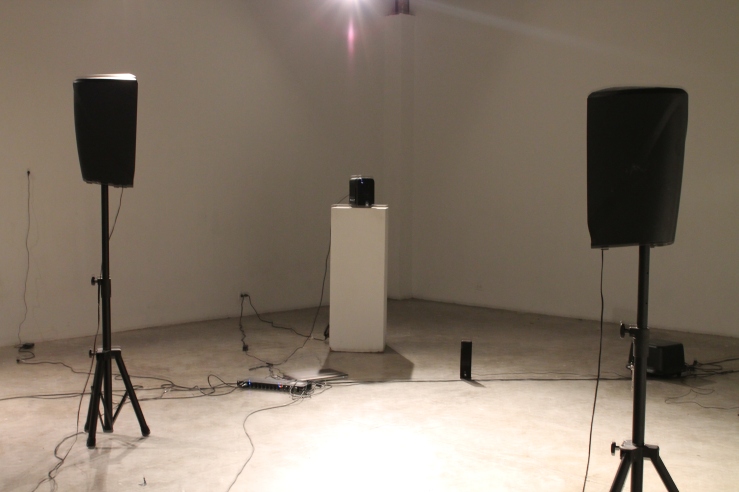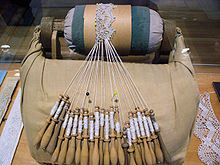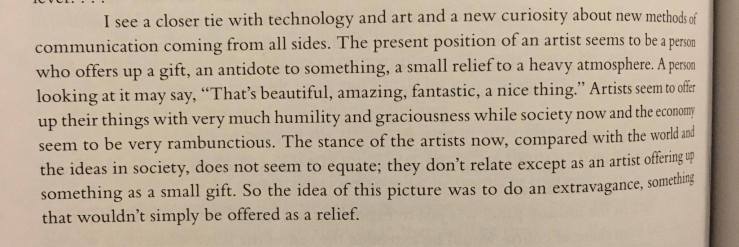At the end of its constructed I knew there would be conflict with the physicality and the social aspect of the environment. In my theorizing, they exist in the same space of consideration but the weight of the piece was being fought for by the two. There were bridges made between elements in the environment, and between the list, the performer, and the participants, but not as clearly between those systems.
I wanted an embodiment of the tension between real and fictitious. A space that embodies the feeling of the categories, but together is arbitrarily placed.
The swamp was clearly not a swamp; this fictitious claim of containment in a manmade vessel is constructed and accepted in conversation such as the placement of the participants in their taxonomies.
There’s inundation of concept when both the borges and the swamp exist together, but there’s absence when only one exists. The swamp feels static and passive without an activating behavior, and list seems contextless without an environment. I’m unsure how to resolve this.
One idea for idealization is to immensely lengthen the experience of existing and interacting in the space. More time, more context, more possibility in the space might allow for a less rushed understanding. The process for receiving a classification is lengthened. Perhaps strangers can come into the space, spend time with the host, and be assigned a category through their interactions. People may come and go as they please, but hopefully relationships will be forged during the time passed.
I’m so grateful for the response from my peers. It was wonderful to hear how so many bonded with their classification through their perceptions of self, or projection of such at least. Bella described to me how she thought I knew a secret about her. This idea connects to the considerations of language that went into making the piece. The words themselves are strewn together, removed from their surroundings, but are sliced and reconstructed and loosely applied to whatever they will stick to. Language can function like this. I barely know any of my classmates. It’s only the way they speak, their posture, their facial expressions which inform me enough to pull judgment from somewhere.
Every one began asking why I gave them their cards and I wasn’t prepared to give an articulated reasoning. I have reasoning, certainly, but never pieced together the words or examples in my head.
Roya explained how each person related to their category and how intuitively she understood why they made sense.
It’s heartwarming to see Carrie unravel and react. She thinks and feels viscerally, deriving great joy from existing, experiencing others exist, and observing feeling.
Anyways, enough gushing about my classmates whom I do not know very well at all.
The swamp without the list causes physical engagement to overwhelm consideration of intellectual challenge? People want to experience it and this becomes the piece. This is a problem with “interactive” art. i.e. Olafur elliason’s weather project. Necessary non-activity.
I want to continue with the exploration of language as a means of environmental/social abstraction. Or abstraction of language as a means of social understanding or inversion of such.
I had a good time making this.




 If I hadn’t watched the video there is a great chance I would’ve never recovered this memory. When I was young I would pick up long objects and place them over each other, mimicking the motions of this weaving, but I was never exposed to this practice in real life and I have absolution no recollection of how I could’ve been introduced to the image of it. There is a simultaneous heat of frustration and dream-like feeling of rediscovery when pondering something that you absolutely cannot remember. My memory is generally extremely precise, which makes this even more poignant.
If I hadn’t watched the video there is a great chance I would’ve never recovered this memory. When I was young I would pick up long objects and place them over each other, mimicking the motions of this weaving, but I was never exposed to this practice in real life and I have absolution no recollection of how I could’ve been introduced to the image of it. There is a simultaneous heat of frustration and dream-like feeling of rediscovery when pondering something that you absolutely cannot remember. My memory is generally extremely precise, which makes this even more poignant.
